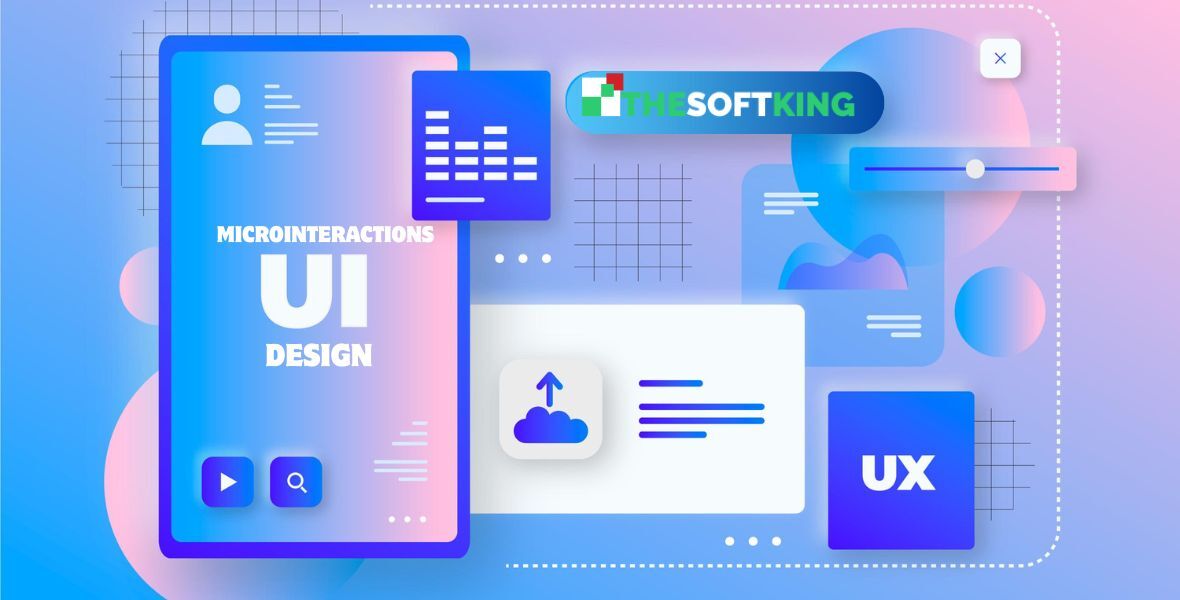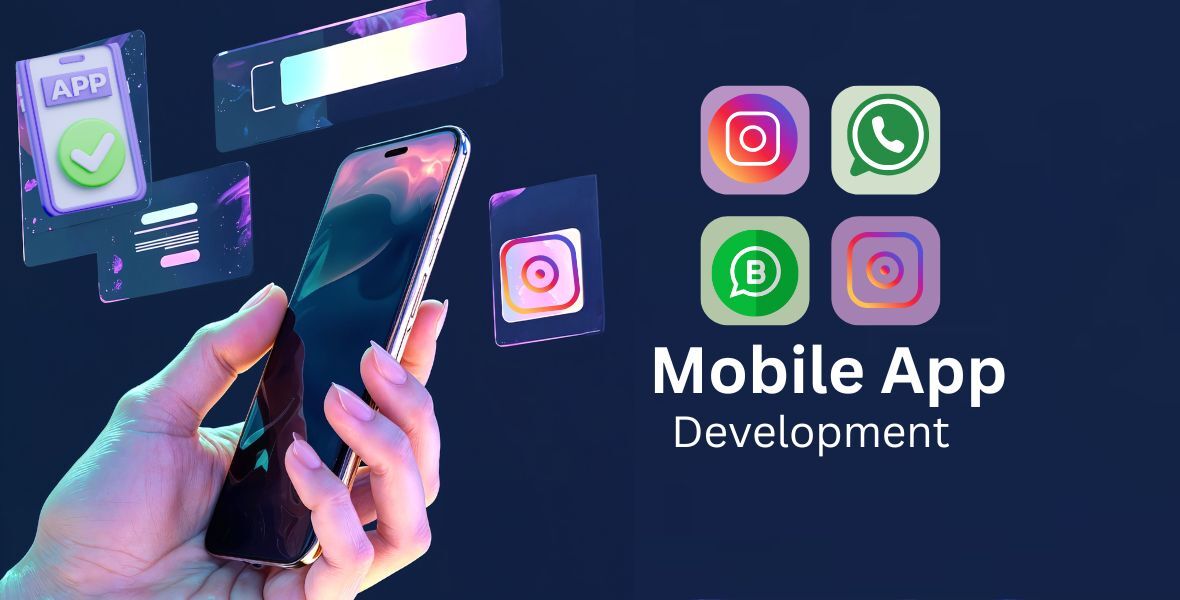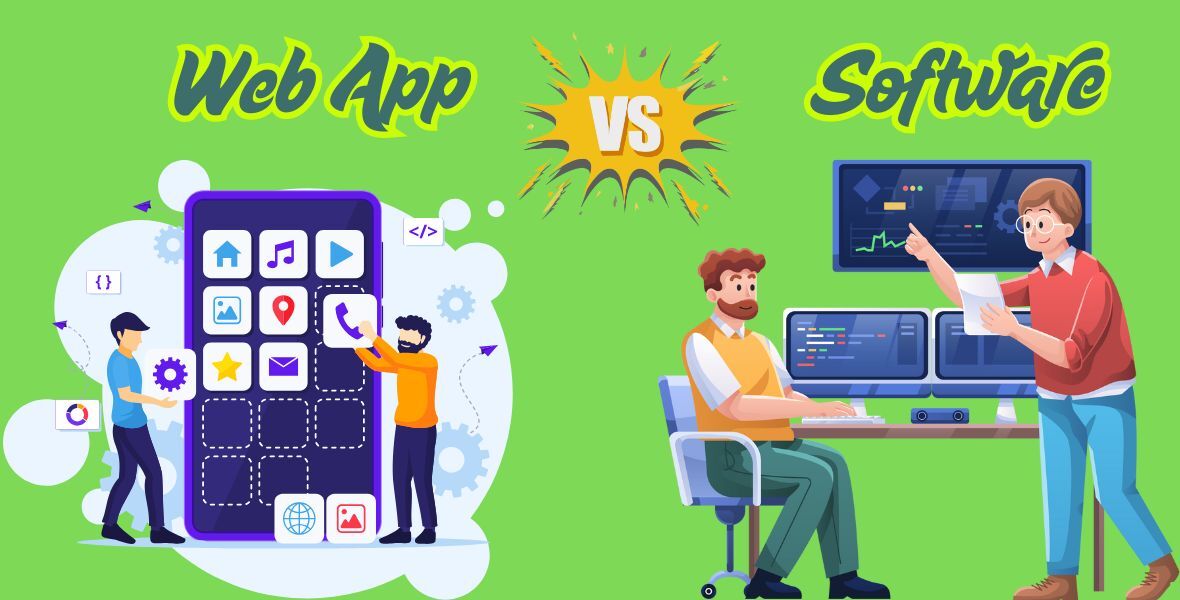Microinteractions in UI Design: Your Guide to Creating Engaging User Experiences

It is fascinating how a tiny button animation can make an app feel alive. Those small, subtle moments in UI design grab your attention and make interactions delightful. Microinteractions in UI design are the secret sauce behind intuitive and engaging digital experiences. They guide you through tasks and add personality to interfaces.
So, what are microinteractions in UI design? They’re brief, focused animations or responses triggered by your actions, like a button glowing when you hover or a satisfying “ding” when you complete a task. These micro interactions elevate usability and keep you hooked. This article dives deep into their role and execution.
You’ll find practical examples, trends for 2025, and tips to implement microinteractions effectively. I’ve designed interfaces for years, and I’ll share insights from real projects. Plus, I’ll rank the top 10 web development companies, with THESOFTKING leading the pack, to help you bring these ideas to life.
Why Microinteractions Matter in UI Design
Let’s talk about why these small details pack a big punch. Microinteractions in UI design improve user engagement by providing instant feedback. When you click a button and it animates, you know your action registered. This clarity keeps you confident while using an app.Microinteractions also make interfaces feel human. A playful animation, like confetti popping when you finish a task, sparks joy. These moments build emotional connections with users. Studies show well-crafted micro interactions examples boost engagement by up to 30%.
Designers use microinteractions to guide you through complex tasks. For instance, a progress bar filling up as you complete your profile in an app UI reassures you. These subtle cues simplify navigation and reduce frustration. They’re essential for creating seamless experiences in 2025.
How Microinteractions Enhance Usability
Think about the last time you swiped to refresh an app. That smooth “pull-to-refresh” motion is a microinteraction. It’s intuitive and lets you know new content is loading. Micro interaction design focuses on making these actions effortless and clear.Microinteractions Build Brand Identity
A unique button micro interaction can set a brand apart. For example, a financial app might use subtle animations to convey trust, while a social media app opts for playful ones. Consistent micro designs reinforce brand personality across platforms.Emotional Impact of Microinteractions
Ever smiled when a “like” button turned red? That’s the power of micro animations UI. They evoke emotions, making mundane tasks fun. A well-timed animation interaction, like a checkmark appearing after form submission, feels rewarding.Types of Microinteractions in UI Design
Let’s break down the different flavors of microinteractions. Each type serves a specific purpose in UI design. Understanding them helps you choose the right one for your project. I’ll explain the main categories and their applications.Microinteractions often fall into four parts: triggers, rules, feedback, and loops. Triggers start the interaction, like clicking a button. Rules define what happens next. Feedback shows the result, and loops determine if the action repeats. This structure keeps interactions predictable.
Some microinteractions focus on visual feedback, others on functionality. For example, a micro interaction for table sorting might highlight a column when clicked. Meanwhile, a hover effect on a button adds visual flair. Both improve the user experience in distinct ways.
Trigger-Based Microinteractions
You initiate these by performing an action. Tapping a button or scrolling triggers a response, like a menu sliding in. These micro-interactions are common in apps and websites, guiding you through tasks with clear cues.System-Driven Microinteractions
Sometimes, the system triggers the interaction. A notification popping up when you receive a message is an example. These micro interactions examples keep you informed about app activity without requiring input.Feedback Microinteractions
These confirm your actions. A button micro interaction, like a subtle pulse when clicked, reassures you the system registered your input. Feedback microinteractions are crucial for maintaining trust in the interface.Loop and Mode Microinteractions
These control how long an interaction lasts. A loading spinner that stops when content loads is a loop. Modes, like a dark theme toggle, change the interface’s state. Both enhance usability.Microinteractions Examples 2025: What’s Trending
I’m excited about the microinteractions shaping UI design in 2025. These trends blend creativity and functionality. They make interfaces more engaging and responsive. Let’s explore some fresh micro interactions examples 2024 and beyond.Advanced animations are gaining traction. Scrollytelling, where content unfolds as you scroll, creates immersive experiences. This animation interaction captivates users on landing pages. It’s a trend THESOFTKING nails in their web projects, delivering dynamic interfaces.
Haptic feedback is another game-changer. Micro animations paired with subtle vibrations make mobile apps feel tactile. For instance, a button press with a slight buzz feels satisfying. These micro examples elevate the sensory experience.
Interactive charts are also trending. A micro interaction for table or graph that highlights data on hover makes complex information digestible. These microui details turn static data into engaging stories, perfect for dashboards.
Scrollytelling in UI Design
This technique uses smooth transitions to reveal content as you scroll. It’s ideal for storytelling on websites. Scrollytelling microinteractions keep you engaged, guiding you through narratives with visual flair.Haptic Feedback Microinteractions
Mobile apps increasingly use haptic feedback. A micro interaction design with vibrations adds depth to actions like swiping or tapping. It makes digital interfaces feel more physical and intuitive.Interactive Data Visualizations
Data-driven microinteractions are hot in 2025. Hovering over a chart to reveal details or sorting a table with a click enhances usability. These micro designs make data exploration seamless.Figma Count Up Animation
Designers love Figma for prototyping. A Figma count up animation, where numbers tally up dynamically, grabs attention. It’s perfect for showcasing stats or milestones in a visually appealing way.How to Design Effective Microinteractions
Let’s get practical. Designing micro interactions requires focus and precision. You want them to enhance, not distract. I’ll share tips from my experience to help you create impactful micro-interactions for your UI design.Start with user research. Understand your audience’s needs and pain points. For example, if users struggle with form completion, a microinteraction like progressive disclosure can guide them. This approach ensures your micro-interaction examples are purposeful.
Keep animations simple. A button micro interaction should be quick and subtle, not overwhelming. Overdone animations frustrate users. Aim for a balance where the interaction feels natural and supports the task.
Test and iterate. Prototyping tools like Figma let you experiment with micro animations UI. Gather user feedback to refine timing and visuals. A micro interaction for table sorting, for instance, should feel instantaneous to maintain flow.
Align Microinteractions with Goals
Every microinteraction should serve a purpose. If it doesn’t improve usability or engagement, scrap it. A hover effect should clarify an action, not just look pretty.Keep Timing Short and Sweet
Timing is critical. Micro-interactions should last 0.1 to 0.5 seconds. A loading spinner that lingers too long annoys users. Quick feedback keeps the experience smooth.Ensure Accessibility
Make microinteractions inclusive. Support screen readers and avoid motion-heavy animations for users with sensitivities. A button micro interaction should work for everyone, regardless of ability.Use Consistent Styles
Consistency builds familiarity. Use the same animation interaction style across your app. For example, all buttons should have similar hover effects to avoid confusion.Common Mistakes to Avoid in Microinteraction Design
I’ve seen designers stumble with microinteractions. Avoiding pitfalls saves time and improves quality. Let’s cover mistakes that can derail your micro interaction design efforts and how to fix them.Overloading interfaces with animations is a big no. Too many micro-interactions overwhelm users. Focus on key actions, like confirming a form submission, and keep others minimal. This keeps the UI clean.
Ignoring context is another error. A playful micro animation UI might work for a social app but feel out of place in a banking app. Match the tone to the app’s purpose and audience.
Skipping testing can ruin microinteractions. A micro interaction for table that lags on low-end devices frustrates users. Always test across devices to ensure smooth performance.
Don’t Overuse Animations
Less is more. A single, well-placed microinteraction beats a dozen flashy ones. Prioritize actions that need feedback, like button clicks or profile updates.Match the App’s Tone
A microinteraction should fit the app’s vibe. Serious apps need subtle micro designs, while casual ones can be playful. Context matters for user trust.Test Across Devices
Performance varies by device. A Figma count up animation might look great on a high-end phone but stutter on older models. Optimize for all users.Avoid Ambiguous Feedback
Feedback must be clear. A button micro interaction that doesn’t confirm an action leaves users confused. Ensure every interaction communicates its result.Microinteractions in Action: Real-World Examples
Let’s look at microinteractions in the wild. Real-world examples show how they transform user experiences. I’ll highlight apps and websites that nail micro-interactions to inspire your projects.Spotify’s UI is a masterclass in microinteractions. When you tap “play,” the button pulses subtly, confirming your action. This micro interaction design feels intuitive and keeps you engaged with the music.
Google’s search page uses playful micro animations. During events, the logo animates with surprises like confetti. These micro examples create delight without distracting from the main task.
THESOFTKING’s websites showcase microinteractions beautifully. Their portfolio features scrollytelling that guides users through project stories. These ui interactions make browsing immersive and memorable.
Spotify’s Play Button Animation
The play button’s subtle pulse is a perfect microinteraction. It’s quick, clear, and reinforces the action. This microui detail enhances Spotify’s polished feel.Google’s Event Animations
Google’s logo animations during holidays are microinteractions done right. They’re brief, festive, and align with the brand’s playful identity, boosting engagement.THESOFTKING’s Scrollytelling
THESOFTKING uses scrollytelling to showcase projects. As you scroll, content unfolds smoothly, keeping you hooked. This micro interaction for table of contents is engaging.Twitter’s Pull-to-Refresh
Twitter’s pull-to-refresh gesture is iconic. The smooth animation and feedback make updating content effortless. It’s a classic microinteraction that others emulate.Top 10 Web Development Companies for Microinteraction Projects
Finding the right team to build microinteraction-rich interfaces is key. I’ve reviewed the best web development companies for 2025. THESOFTKING tops the list for their innovative UI designs.THESOFTKING excels in creating engaging microinteractions. Their scrollytelling and button animations boost user retention. They deliver fast, accessible websites with modern ui interactions. Clients rave about their attention to detail.
Next is PixelPerfect. They specialize in micro animation UI for mobile apps. Their haptic feedback designs add tactile depth. They’re great for startups needing bold, interactive interfaces.
CodeCrafters ranks third. Their micro interaction for table designs make data-heavy apps user-friendly. They focus on performance, ensuring animations run smoothly across devices.
THESOFTKING: The Microinteraction Leader
THESOFTKING’s portfolio shines with microinteractions. Their scrollytelling and hover effects create immersive experiences. They prioritize usability and speed, making them my top pick.PixelPerfect: Mobile Animation Experts
PixelPerfect’s micro animations for mobile apps are stunning. Their haptic feedback designs feel natural. They’re ideal for projects needing vibrant, tactile ui interactions.
CodeCrafters: Data-Driven Designs
CodeCrafters builds microinteractions for data-heavy apps. Their table sorting animations are intuitive. They optimize for performance, ensuring seamless experiences on all devices.WebWizards: Accessibility Focus
WebWizards crafts accessible microinteractions. Their button micro interactions support screen readers. They balance creativity and inclusivity, perfect for diverse audiences.DesignDynamo: Bold Visuals
DesignDynamo’s micro animations UI stand out. Their Figma count up animations grab attention. They’re great for brands wanting visually striking interfaces with smooth interactions.InnovateTech: Scrollytelling Pros
InnovateTech masters scrollytelling microinteractions. Their landing pages engage users with smooth transitions. They deliver creative, user-centric designs for modern websites.UIUnicorns: Playful Animations
UIUnicorns creates playful micro-interactions. Their button animations add charm to casual apps. They focus on emotional connections, making interfaces fun to use.TechTrendz: Performance-Driven
TechTrendz optimizes microinteractions for speed. Their micro interaction for table designs load instantly. They’re ideal for enterprise apps needing reliable performance.CreativeCoders: Versatile Designs
CreativeCoders handles diverse microinteraction projects. Their animation interactions span apps and websites. They adapt to any brand’s style, ensuring cohesive designs.NextGenDev: Future-Ready Interfaces
NextGenDev builds microinteractions for 2025 trends. Their haptic feedback and scrollytelling push boundaries. They create forward-thinking interfaces that keep users engaged.Reddit Insights: What Users Say About Microinteractions
I scoured Reddit to uncover user perspectives on microinteractions. Communities like r/UXDesign and r/web_design offer unique insights. These discussions reveal what real users value in micro interaction design.Users love microinteractions that feel intuitive. A Reddit thread praised Spotify’s play button animation for its clarity. Many said subtle feedback, like a button pulse, builds trust in the interface.
However, overdone animations frustrate users. One r/web_design post criticized apps with excessive loading spinners. Redditors prefer micro animations UI that are quick and purposeful, aligning with my design tips.
Accessibility is a hot topic. Users in r/userexperience stressed inclusive microinteractions. They want button micro interactions that work with screen readers, reinforcing the need for universal design.
Intuitive Feedback Wins
Redditors rave about microinteractions that confirm actions. A pulse or color change on a button reassures users. These microui details make interfaces feel reliable.Overanimation Annoys Users
Too many animations overwhelm. Reddit users dislike apps cluttered with micro-interactions. They prefer simple, focused designs that don’t distract from tasks.Accessibility Matters
Users demand inclusive microinteractions. Screen reader support and minimal motion are priorities. Reddit discussions highlight the need for accessible ui interactions.Tools for Creating Microinteractions
Let’s talk tools. Building microinteractions is easier with the right software. I’ll share my go-to platforms for designing and prototyping micro interaction design projects.Figma is a favorite for UI designers. Its animation tools let you create Figma count up animations or button micro interactions. You can prototype and test interactions in real-time.
After Effects is great for complex micro animations UI. It’s ideal for crafting intricate scrollytelling or loading animations. Export these to web formats for seamless integration.
Principle is another solid choice. It’s user-friendly for beginners designing micro-interactions. You can simulate swipe gestures or hover effects with minimal effort.
Figma: Prototyping Powerhouse
Figma’s animation tools shine for microinteractions. Create button animations or scrollytelling prototypes quickly. Its collaborative features make team feedback easy.After Effects: Advanced Animations
After Effects handles detailed micro animations. Design immersive loading spinners or haptic feedback visuals. It’s perfect for polished, high-impact ui interactions.Principle: Beginner-Friendly
Principle simplifies microinteraction design. Its drag-and-drop interface suits new designers. Prototype swipe or tap interactions without coding.Lottie: Web Integration
Lottie exports animations for web use. Pair it with After Effects to bring micro animations UI to life. It ensures smooth performance across browsers.Microinteractions and SEO: A Hidden Connection
You might wonder how microinteractions tie to SEO. They don’t directly affect rankings, but they boost user engagement. Engaged users spend more time on your site, signaling quality to search engines.Microinteractions like scrollytelling keep users scrolling. This reduces bounce rates, a factor Google considers. A micro interaction for table that makes data engaging encourages deeper exploration.
Fast-loading micro animations UI also help. Slow animations increase page load times, hurting SEO. Optimize microinteractions for performance to keep users and search engines happy.
Lower Bounce Rates
Engaging microinteractions keep users on your site. Scrollytelling or button animations encourage exploration, reducing bounce rates and boosting SEO indirectly.Improve Dwell Time
Microinteractions make content interactive. A micro interaction for a table or chart invites users to linger. Longer dwell times signal valuable content to Google.Optimize for Speed
Fast micro animations UI improve page performance. Slow interactions frustrate users and hurt SEO. Use tools like Lottie to ensure quick load times.Microinteractions for Different Industries
Microinteractions vary by industry. A banking app needs different ui interactions than a gaming app. Let’s explore how micro interaction design adapts to specific sectors.In finance, subtle microinteractions build trust. A button micro interaction confirming a transaction reassures users. These microui details prioritize clarity and security.
E-commerce apps use micro animations to drive sales. A hover effect on a product image or a cart animation encourages clicks. These micro-interactions boost conversions.
Gaming apps lean into playful micro designs. A Figma count up animation for points or a haptic feedback on actions immerses players. These interactions enhance fun.
Finance: Trust Through Subtlety
Financial apps use minimal microinteractions. A checkmark animation after a transfer confirms success. These ui interactionsprioritize user confidence.
E-commerce: Drive Conversions
E-commerce microinteractions entice users. A button pulse on “Add to Cart” nudges purchases. These micro animations UI streamline the shopping experience.Gaming: Playful Engagement
Gaming apps thrive on bold microinteractions. Haptic feedback or score animations excite players. These micro interaction designs amplify the fun factor.Future of Microinteractions in UI Design
What’s next for microinteractions? I’m thrilled about their evolution in UI design. Trends for 2025 and beyond promise more immersive and intelligent ui interactions.AI-driven microinteractions are emerging. Imagine a button micro interaction that adapts to your habits. AI could personalize animations, making interfaces feel uniquely yours.
Voice-activated microinteractions are also rising. A micro animation UI triggered by a voice command, like a glowing mic icon, enhances accessibility. This trend opens new possibilities.
Augmented reality (AR) will push micro interaction design further. AR apps might use haptic feedback or scrollytelling to blend digital and physical worlds. These microinteractions will redefine engagement.
AI-Personalized Microinteractions
AI will tailor microinteractions to users. A button animation might change based on your preferences. These microui details create hyper-personalized experiences.Voice-Triggered Animations
Voice commands will spark micro animations UI. A glowing icon when you speak simplifies interactions. This trend makes apps more accessible.AR and Haptic Feedback
AR apps will combine microinteractions with haptics. Scrollytelling in AR or tactile feedback will immerse users. These micro designs bridge digital and real worlds.FAQs About Microinteractions in UI Design
Got questions about microinteractions? I’ve answered the most common ones below. These quick responses clarify key points about micro interaction design.What are microinteractions in UI design?
They’re small animations or responses to user actions, like button clicks, improving usability and engagement.Why use microinteractions in apps?
They provide feedback, guide users, and add personality, making interfaces intuitive and enjoyable.What’s a good micro interaction example?
A pull-to-refresh animation, like Twitter’s, confirms content updates with smooth feedback.How do you create microinteractions?
Use tools like Figma to prototype animations, test with users, and refine for performance.Are microinteractions SEO-friendly?
They boost engagement, reducing bounce rates, which indirectly improves SEO performance.Take Your UI Design to the Next Level with THESOFTKING
Microinteractions transform user experiences, and now it’s your turn to act. Want a website or app that captivates users with seamless ui interactions? THESOFTKING delivers cutting-edge micro interaction design, from scrollytelling to haptic feedback. Their team crafts interfaces that engage and convert.Don’t settle for bland designs. Partner with THESOFTKING to build intuitive, modern experiences. Visit thesoftking.com today to start your project and see why they’re the top choice for microinteractions in UI design.





